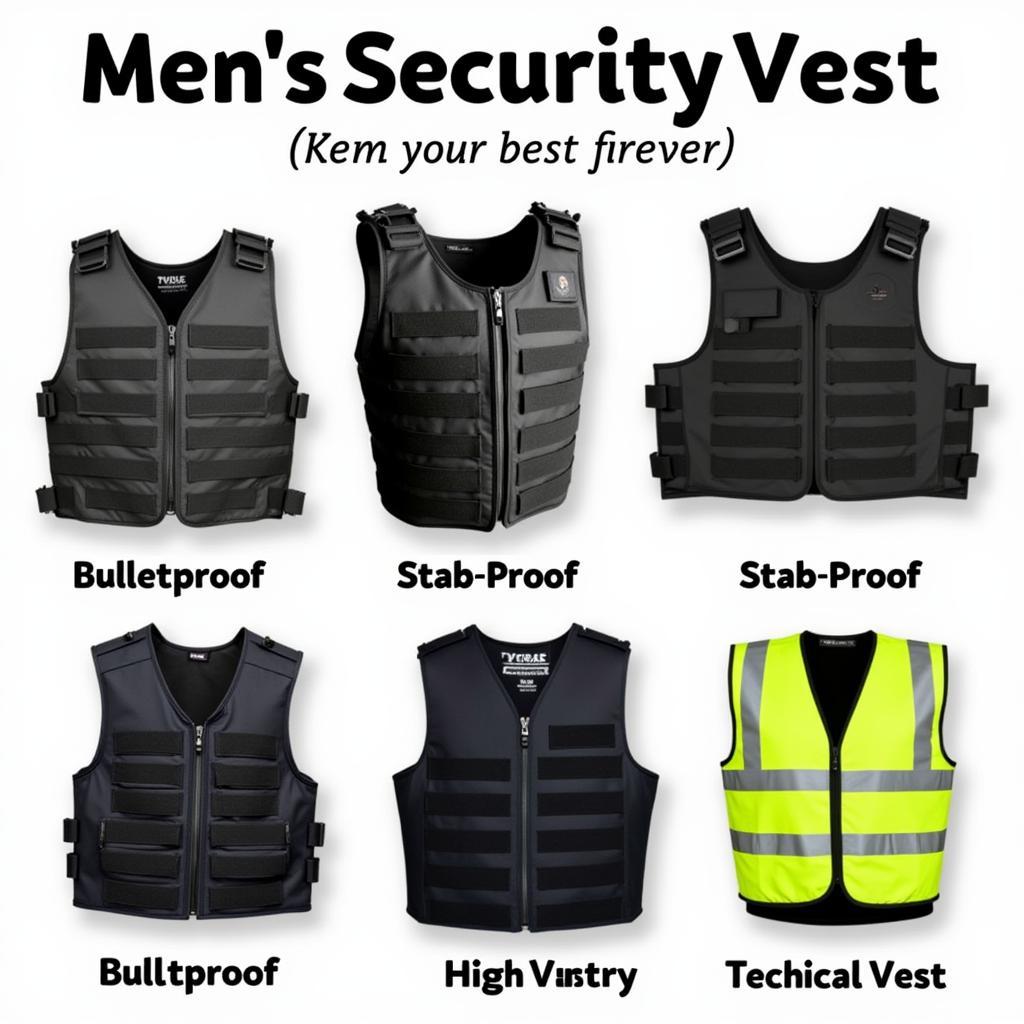Men’s Security Vests: Your Guide to Safety and Functionality
October 16, 2024Men’s security vests have become increasingly essential for professionals in various fields, providing a visible deterrent against crime while ensuring the safety and functionality of the wearer. Whether you’re a security guard patrolling a high-risk area or a construction worker managing traffic, understanding the features and benefits of men’s security vests is crucial. This comprehensive guide will delve into the different types, features, and considerations when choosing the right vest for your needs.
 Different Types of Men's Security Vests
Different Types of Men's Security Vests
Types of Men’s Security Vests
Choosing the right type of security vest is paramount. Here are some of the most common types:
- Bulletproof Vests: These vests offer the highest level of protection, designed to absorb the impact of bullets and shrapnel. They are typically worn by law enforcement and security personnel in high-risk environments.
- Stab-Proof Vests: These vests protect against stabbing and slashing attacks using layers of specialized materials like Kevlar or chainmail. They are commonly used by security guards, bouncers, and other professionals facing potential threats from sharp objects.
- High-Visibility Vests: Designed for maximum visibility, these vests feature fluorescent colors and reflective strips, making the wearer easily identifiable in low-light conditions. They are crucial for construction workers, traffic controllers, and emergency responders.
- Tactical Vests: These vests prioritize functionality and storage, featuring multiple pockets and pouches for carrying essential gear like radios, flashlights, and handcuffs. They are popular among security personnel, military, and law enforcement.
Essential Features to Consider
- Level of Protection: Determine the level of protection required for your specific job. Consider factors like potential threats, work environment, and industry regulations.
- Fit and Comfort: A well-fitting vest ensures maximum protection and comfort throughout long shifts. Look for adjustable straps, breathable materials, and ergonomic designs.
- Functionality and Storage: Consider the number of pockets, pouches, and attachment points needed for your equipment. Tactical vests offer greater storage options for specialized gear.
- Visibility: If working in low-light conditions or near traffic, prioritize vests with high-visibility colors and reflective strips.
- Durability and Materials: Choose vests made from high-quality, durable materials like Cordura nylon or ripstop fabric to withstand wear and tear.
Choosing the Right Size and Fit
Proper fit is essential for both protection and comfort. When selecting a men’s security vest, consider these factors:
- Chest Size: Measure around the fullest part of your chest, keeping the tape measure level.
- Torso Length: Measure from the top of your shoulder to the point where you want the vest to end.
- Adjustability: Look for vests with adjustable side straps and shoulder straps to ensure a secure and comfortable fit.
Maintaining Your Security Vest
- Regular Cleaning: Follow the manufacturer’s instructions for cleaning your vest. Handwashing with mild detergent is generally recommended.
- Proper Storage: Store your vest flat or hang it on a sturdy hanger to prevent creases and maintain its shape.
- Inspection: Regularly inspect your vest for any signs of wear and tear, including loose seams, broken zippers, or damaged materials.
By following these guidelines, you can make an informed decision when choosing the right men’s security vest for your needs, ensuring your safety, comfort, and functionality on the job.